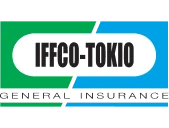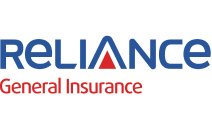Car accidents come unannounced and may sometimes prove fatal. But besides the potential harm they may cause to life, they also bring considerable damage to the vehicle in use. This is why it is equally important to safeguard both life and your car to prevent maximum damage in cases like these. For you, there is life and health insurance, and for the protection of your car, there is third–party insurance for cars.
This blog details all that there is to know about third-party car insurance and how it can offer great coverage for your car.
Table of Contents
- What is Third-Party Insurance for Car?
- Importance of Third-Party Car Insurance Policy
- How Does Third-Party Car Insurance Work?
- Features of Third-Party Car Insurance
- Benefits of Four-Wheeler Third-Party Insurance
- How are Third-Party Car Insurance Premium Rates Calculated?
- Top Third-Party Car Insurance Plans
- Third-Party Policy for Commercial Vehicles
- Inclusions of Third-Party Car Insurance
- Exclusions of Third-Party Car Insurance
- Third-Party Insurance Premium Rates
- Factors that Affect Third-Party Insurance Premium
- Long-Term Third-Party Cover for Five Years for Car Owners
- Add-ons Under Third-Party Car Insurance
- Third-Party v/s Comprehensive Car Insurance Plans
- Drawbacks of Third-Party Car Insurance
- When is Third-Party Insurance Better than Comprehensive?
- How to Make Third-Party Car Insurance Claims?
- Points to Note When Raising a Claim
- How to Renew Third-Party Car Insurance Plan?
- How to Buy Third-Party Car Insurance Online from Turtlemint?
- How to Get the Cheapest Third-Party Car Insurance?
- Why Choose Turtlemint?
- FAQs
What is Third-Party Insurance for Car?
Third-party car insurance is a cover to protect you (the car owner) against any major liability during a car accident. These may include injuries to a third person or damage to a third-party property. In the unforeseen event of an accident involving your car and a third-party person or property, you may turn to third-party insurance, meaning your insurance company will compensate you for repair and/or hospitalization costs that you may need to incur for the third party.
Importance of Third-Party Insurance Policy
According to the Motors Vehicle Act of 1988, each car owner in India is mandated by law to purchase third-party car insurance for coverage. When compared against a comprehensive plan, third-party vehicle insurance offers the basic coverage required and is also more affordable. Furthermore, third-party insurance coverage protects you financially against any third-party liabilities, damage to property, death, or physical harm to a third-party person or thing.
It is worth noting here that third-party insurance means the bare minimum insurance coverage that your car needs to ply on roads in India. Not having this basic plan can attract hefty fines from traffic police. Additionally, any loss to the third party can become a personal liability for you if your vehicle is not insured, thereby putting a heavy load on your pocket.
Renew your car insurance without inspection or paperwork
Features of Third-Party Car Insurance
Listed below are some of the salient features of a third-party car insurance cover:
- In the case of new cars, it is recommended that the cover be purchased for a long-term period of 3 years. For older cars, however, coverage is available on an annual basis.
- Third-party car insurance price depends on the engine capacity of the car.
- Third-party insurance for cars makes it mandatory to buy a personal accident cover for the driver/owner of the car along with the third-party cover. Insurance coverage is provided for the car owner/driver in case of death or permanent disability while driving.
- In the case of third-party claims, it is mandatory to file a police FIR to avail of the benefits of third-party car insurance.
- The premium on third-party insurance for cars is relatively lower and easily affordable compared to the comprehensive car insurance plan.
- Third-party car liability plan is designed to offer sufficient coverage against any personal injury/loss of life to a third-party individual and/or property damage to the concerned party up to a specified limit.
Also Read: Ways to check vehicle insurance status
Benefits of Four-Wheeler Third-Party Insurance
As stated earlier, third-party car insurance is mandated by the Motor Vehicles Act and one must buy it to ply the vehicle on Indian roads. However, apart from the legal obligation, the insurance cover presents several benefits to the policyholder, some of which are discussed below:
- Freedom from legal fines and penalties: The main benefit of having third-party coverage is protection against legal fines and penalties. If you are caught driving without third-party car insurance, you will be liable to pay hefty fines. Moreover, in the case of serious accidents, lack of coverage may also result in imprisonment or other legal consequences.
- Financial compensation: Third-party car insurance coverage shoulders the financial burden that you may need to incur in case of third-party losses. It provides you with financial security in unforeseen emergencies.
- Cost-effective: Third-party car insurance price is relatively lower and thus easily affordable. It is quite cost-effective compared to the coverage offered.
- Easy to buy: You can easily find suitable third-party car insurance online. In addition to a simple & convenient process, buying third-party car insurance online offers instant coverage when required.
- Sufficient coverage: Third-party physical injuries and death are covered without any upper limit on the plan. The financial liability decided by the Motor Accidents Claims Tribunal is paid for by the third-party insurance policy. You can avail of unlimited coverage for all third-party physical loss. In the case of property damage, however, coverage is allowed for only up to Rs. 7.5 lakhs.
How are Third-Party Car Insurance Premium Rates Calculated?
Certain factors help determine the premium rates applicable to third-party car insurance policies. These are detailed below:
- Capacity of engine: The capacity of the engine of your car also determines the rate of premium charged. Cars with higher engine capacities tend to attract higher premiums.
- GST and other taxes: Their imposition can slightly increase the total premium payable on the policy.
- Type of vehicle: Different premium rates exist for private cars and EVs. For instance, commercial vehicles have higher premiums than private-owned cars.
- Geographical location: The state or area where your car is registered affects the premium rate. Cities and coastal areas may tend to have higher premiums on insurance plans owing to the higher incidence of accidents in these regions.
Top Third-Party Car Insurance Plans
Listed below are some of the best insurance companies offering third-party car insurance:
| Insurer | Key Features |
| SBI General Car Insurance | – Coverage for damage caused due to both natural and man-made causes – Personal accident insurance cover for car driver and owner – NCB offered |
| HDFC Ergo Car Insurance | – 24×7 roadside emergency assistance provided – Coverage for both third-party liabilities and damage to own car – 100% online purchase available |
| TATA AIG Car Insurance | – Cashless repairs at over 6,500 network garages – More than 15 add-on covers offered |
| Bajaj Allianz Car Insurance | – Personal accident cover for owner-driver for up to Rs. 15 lakhs – Add-on personal accident cover for occupants offered |
| Acko Car Insurance | – Own and third-party liabilities covered – Hassle-free smooth claim settlement |
What Does Third-Party Insurance Include?
A third-party insurance for cars includes the below-listed liabilities in its coverage scope:
a). Third-Party Liability
This includes injury or death of the third party and the coverage provided in this case is unlimited. In case of loss of life to a third party, the insurance provider will bear the full compensation. Note that the compensation amount is determined based on the FIR registered with the Motor Accidents Claims Tribunal. It does not depend on the income of the deceased but more on how much the loss has impacted their family. In the case of a private car, the insurance cover for the legal liability of the paid driver depends on the Workmen’s Compensation Act of 1923. Similarly, coverage for unnamed passengers can also be claimed with a nominal additional premium of Rs. 50/person for a sum insured of Rs. 1 lakh up to a maximum of Rs. 2 lakhs.
b). Loss of Property
During an accident, in case of property damage, compensation can be claimed through third-party insurance cover. According to IRDA norms, up to Rs 7.5 lakhs of damage can be covered.
c). Personal Accident Support for Owner
In the case of injury or death of the owner-driver of the vehicle, third-party insurance will compensate for the loss up to a maximum of Rs. 2 lakhs. The compensation limit is as follows:
- In case of death, the compensation is 100%
- In case of loss of eyesight or two limbs, the compensation is 100%
- In case of permanent disability, the compensation is 100%
- In case of loss of 1 limb or 1 eye, the compensation is 50%
Note: The coverage provided is subject to the following conditions:
- The driver-owner is the actual registered owner of the vehicle
- The policy is in the name of the driver-owner of the vehicle
- The driver of the vehicle had a valid driving license according to the provisions of Rule 3 of the Central Motor Vehicles Rules, 1989, during the accident
What Does Third-Party Car Insurance Not Cover?
There are some exclusions under the plan which cannot be claimed in case of an accident. These are listed below:
- If the driver of the car is not its owner, coverage will not be provided under the plan.
- Any damage to third-party property or loss to a person due to radioactive contamination or nuclear weapons is not covered.
- Damage, loss, or liability caused by war or invasion is not included.
- Any accident or loss which is not in the specified geographical boundary will not be covered.
- Accidents caused due to driving under the influence of alcohol are excluded from coverage.
- Under-aged driving or not having a valid driving license is not considered for claims.
- Purposeful intent of causing an accident is not included.
- A vehicle used for illegal activities at the time of the accident cannot be covered for claims.
Note: The above-mentioned are common exclusions under the third-party car insurance plan. For more information, please refer to your car insurance policy documents.
Third-Party Insurance Premium Rates
As stated earlier, a car’s third-party insurance price is fixed by the IRDAI. The table below shares the premium rates for third-party insurance for private vehicles, commercial vehicles, and trailers:
| Type of Vehicle | Proposed Third-Party Car Insurance Premiums for FY 2023-24 |
| Private cars up to 1,000 cc | Rs. 2,094 |
| Private cars more than 1,000 cc but below 1,500 cc | Rs. 3,416 |
| Private cars more than 1,500 cc | Rs. 7,897 |
Factors that Affect Third-Party Insurance Premium
Premium is one of the most important factors that determine your decision to buy a third-party car insurance. Given below are some key factors that may affect the premium determined for payment:
- Your car model: The make and model of the vehicle matters here. Sports cars generally fall in the category of riskier vehicles and therefore have a higher premium as compared to standard cars that relatively run slower. Similarly, cars using CNG or gas or with a higher CC tend to have higher premium rates.
- IDV of the vehicle: The Insured Declared Value or IDV refers to the current market value of your car and is a key determinant in deciding the premium. As the IDV of your car goes down over time due to depreciation, lower the premium charged, and vice versa.
- Claim frequency: If you didn’t make a single claim in the entire policy year, you are eligible to receive a discount on the premium the following year. This is referred to as a No-Claim Bonus or NCB.
- Amount of coverage required: The amount of premium payable is likely to vary as per the coverage required for your vehicle. Comprehensive plans generally have higher premium rates compared to third-party insurance for cars. Similarly, with the addition of add-on covers, the premium is bound to increase.
Long-Term Third-Party Cover for Five Years for Car Owners
Many insurers offer and also encourage customers to buy long-term third-party coverage for their vehicles to help them avail of the maximum benefits in the unforeseen event of accidents. The tables below present an idea of the premium charged for third-party car insurance for old cars, new cars, and Electric Vehicles (EVs).
Premium for Old Cars
| Private cars | Rate of premium (w.e.f. June 1, 2022) |
| Up to 1000cc | Rs. 2,094 |
| More than 1000cc but less than 1500cc | Rs. 3,416 |
| More than 1,500cc | Rs. 7,897 |
Premium for New Cars
| Private cars | Rate of premium (w.e.f. June 1, 2022) |
| Up to 1000cc | Rs. 6,521 |
| More than 1000cc but less than 1500cc | Rs. 10,640 |
| More than 1,500cc | Rs. 24,596 |
Premium for New EV
| Electric Vehicle | Rate of premium (w.e.f. June 1, 2022) |
| Up to 30KW | Rs. 5,543 |
| More than 30KW but less than 65KW | Rs. 9,044 |
| More than 65KW | Rs. 20,907 |
Add-ons Under Third-Party Car Insurance
Though the third-party car insurance policy provides the basic mandatory cover, it also offers you the option of customizing your policy with a few add-ons. The add-ons that are available with third-party car insurance plans include the following:
- Add-on for personal accident cover for owner/driver up to a value of Rs. 15 lakhs
- Add-on for personal accident cover for co-passengers up to a value of Rs. 2 lakhs
- Add-on for personal accident cover for paid or hired driver of the car
Comprehensive vs Third-Party Insurance for Car
Besides offering third-party coverage, car insurance plans are also available as comprehensive plans. They cover third-party liabilities as well as damages to their own car.
he table below highlights the major differences between comprehensive and third-party insurance plans for better understanding:
| Parameters | Third-Party Car Insurance | Comprehensive Car Insurance |
| Coverage | Cover only third-party legal liabilities and not damages to own car | Cover both third-party liabilities as well as damages to own car, including theft |
| Mandate | These plans are mandatory | These plans are not mandatory |
| Premium | Premium is fixed by IRDAI for all insurance companies and is relatively lower | Premium is fixed by the respective insurance companies and may therefore vary; also higher than third-party premiums |
| Add-ons | One or two add-ons are available | A wide range of add-ons are available |
| Premium discounts | Not available | A wide array of discounts are available, including no-claim discount |
Drawbacks of Third-Party Car Insurance
Although a third-party car insurance policy provides the mandatory coverage to your vehicle, it is generally recommended to opt for a comprehensive car insurance plan. Listed below are a few common areas where third-party insurance for a car falls short of a comprehensive plan:
- Third-party plans do not cover damages to your own car. In the event of an accident, your car may also undergo considerable damage.
- If the car is stolen, the financial loss that you suffer will not be covered by the third-party car insurance policy.
Since such costs can be enormous, comprehensive coverage is recommended especially if you use your car frequently.
When is Third-Party Car Insurance Better than Comprehensive Coverage?
Third-party coverage offers only partial coverage for repairs and hospitalization (with coverage for only the third party and nothing for self). On the other hand, comprehensive coverage offers protection for both the third party and for self. However, in some cases, third-party insurance can be a better choice. Let’s see how:
- When the vehicle’s value is very low
- When you don’t need coverage for damage to your car or physical injury to self
- When you can bear costs for your car damage without the need for any coverage
Glimpse through our guide on how to renew expired car insurance
How to Make Third-Party Car Insurance Claims?
Listed below is the simple step-by-step procedure to file a third-party insurance claim for a car:
- Inform your insurer: The first step is to immediately inform your insurance company in the event of a need for a third-party claim. You will receive a claim reference number from the insurer for tracking your claim status.
- File an FIR: It is compulsory to file an FIR with the police authorities of the area where the claim has been filed. The FIR is a mandatory document for third-party claims.
- Claim Review by the Motor Accidents Tribunal: All third-party claims are transferred to the Motor Accidents Claim Tribunal which assesses the claim and determines the financial liability to the insured. The claim is settled only after the tribunal’s judgment.
- Claim Settlement by the Insurer: Once the tribunal passes its judgment, you would need to inform the insurance company which would then pay the claim directly to the third party. You would also need to fill up and submit a claim form along with the following documents:
- Policy bond
- Driving license
- Identity proof
- Ruling by the tribunal stated on a court document
- Original medical bills and reports in the case of third-party injury
- Any other document as required by the insurer
Upon receipt of the claim form and all the necessary documents, the third-party claim would be settled and closed by the insurer.
Turtlemint offers complete assistance and support for third-party car insurance claims. Following is the procedure to follow when filing a claim with the help of Turtlemint:
- Visit https://www.turtlemint.com/raise-claim/ and click on ‘Raise a Claim’.
- Choose the type of policy under which you want to raise your claim.
- Enter the name of the insurance company, your policy number, your mobile number, and the details of the claim.
- Submit these details and Turtlemint’s claim department will help you get your claim settled at the earliest.
Points to Note When Raising a Third-Party Car Insurance Claim
Raising a claim can be a complex and tedious process if you do not understand the exact process well. Moreover, any small error may result in your claim being rejected. It helps to note a few important points before filing a third-party car insurance claim with your insurer:
- Make sure to lodge an FIR report in case of an accident.
- Inform your insurance company as soon as possible.
- The third party would need to provide valid evidence to prove your fault.
- It is advised to settle small losses and minor damages outside court, or else proceedings may take up a lot of time.
- There is no specified limit on the coverage of personal loss suffered by the third party. For property damages though, the maximum coverage is Rs. 7.5 lakhs.
You can also reach out to a Turtlemint Insurance Advisor for expert guidance and support during the claim process.
How to Renew a Third-Party Car Insurance Plan?
Renewing a third-party insurance plan for a car is easy and cost-effective too. It saves you the hassle of going through applying for a new policy all over again and also helps save the cost involved in purchasing a new policy the second time. Once your existing third-party car insurance plan lapses, you can apply for renewing it online. You may either visit the official portal of your insurer or alternatively, seek assistance from one of Turtlemint’s insurance experts to help you through the renewal process.
How to Buy Third-Party Car Insurance Online from Turtlemint?
Turtlemint allows easy purchase of all third-party car insurance claim policies for customers on its official portal. Following is the simple way of buying the policy online from us:
- Visit the official website of Turtlemint at https://www.turtlemint.com/.
- Click on ‘Find Car Insurance Plans’.
- Enter the car registration number or click on ‘I don’t have a registration number’.
- You will be prompted to enter your registration area.
- Fill in your personal information. Complete the remaining fields on the website as directed.
- Several plans will be visible on your screen. Choose the plan that best suits your requirements and pay the premium.
- You will receive a soft copy of your third-party car insurance policy via email immediately. You may either print and file this copy or simply access it on your email any time.
How to Get the Cheapest Third-Party Car Insurance?
With plenty of options on offer, it can be difficult to make an informed and cost-effective choice while opting for a third-party car insurance plan. The following tips can help you choose the most affordable policy:
- Do your homework well: Carry out a thorough comparison of all your options available and select the one that best aligns with your requirements without burning a hole in your pocket.
- Make sure to choose some voluntary deductibles: This is the amount that you volunteer to pay from your pocket during a claim. If this amount is higher, your premium will be considerably lower and more affordable.
- Avail discounts: Certain organizations such as the Automobile Association of India offer discounts on premiums for third-party car insurance plans. Being a member can get you such discounts.
- Buy third-party car insurance online: Choose to buy the plan online as it is relatively more affordable and you also stand a chance of finding the cheapest policy among a wide range of options.
Why Choose Turtlemint?
It is important to understand the basics of car insurance before purchasing one. Besides, third-party car insurance rates vary between insurers, and it helps to have all the accurate details on the premium payable to make an informed decision. Turtlemint provides a common platform where you can easily access quotes from multiple insurance companies online sitting in the comfort of your home or office.
All you need to do is just log on to Turtlemint and conduct a detailed third-party car insurance price comparison of the different quotes available from different providers. You can easily find the cheapest third-party car insurance on Turtlemint. If you have any queries during the research or buying process, our team of professional insurance advisors will be happy to assist you.
Here are some more reasons why opting for Turtlemint’s third-party car insurance online is a good idea:
- Get smart tips on saving money without any compromise on your cover
- Make an online purchase with secure payment
- Get the best price on insurance with a holistic view of the provider
- Receive end-to-end claim support from insurance experts
- Just let us know your requirements and we will help you with a suitable plan to match your needs
FAQ’s
Yes, you would need to inform the RTO and your insurer about any new installations in your four-wheeler. This includes the switch to CNG and any changes made to the vehicle’s documentation.
Generally, third-party car insurance cannot be canceled barring a genuine reason. Also, the cancellation request must be made to the insurer within 30 days of the date of purchase of the plan.
There is generally no limit on claims filed in case of loss of life or permanent disability caused to a third party due to an accident involving the insured car. In case of third-party property damage due to the insured car, the maximum limit of coverage is up to Rs. 7.5 lakh.
Third-party car insurance plans are generally available for a term of 1 year and can be easily renewed in case of policy tenure lapse.
Yes, according to the Motor Vehicles Act India, 1988, it is mandatory to have a third-party Insurance. Driving a car on Indian roads without a third-party policy is considered illegal.
The IRDAI determines premiums annually, considering the ratio of claims made and the loss to providers.
A comprehensive insurance policy has two components – damage to self or own car and third-party damage. However, in the case of third-party insurance, only third-party damage is factored in for claims.
You should report the accident to your insurer as soon as possible. Most insurance companies have a 24-hour accident claim feature on mobile apps and hotlines. Many insurance companies require policyholders to make claims within a specific time window. You may check with your insurance Advisor at Turtlemint for the exact time frame to inform the insurer as specified in your policy.




















